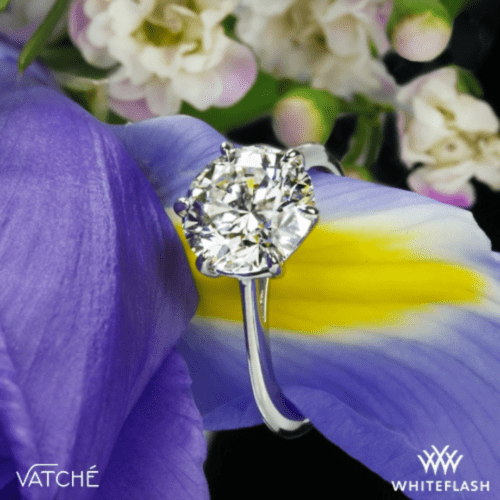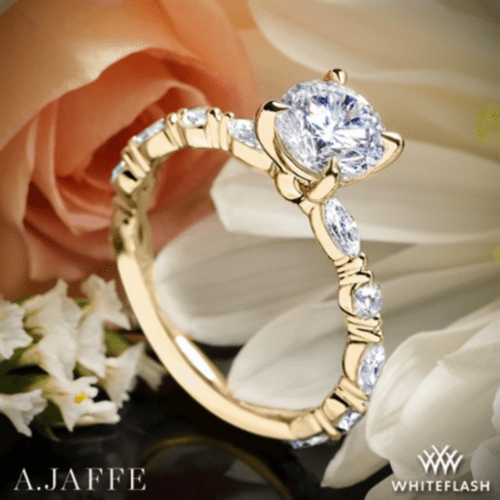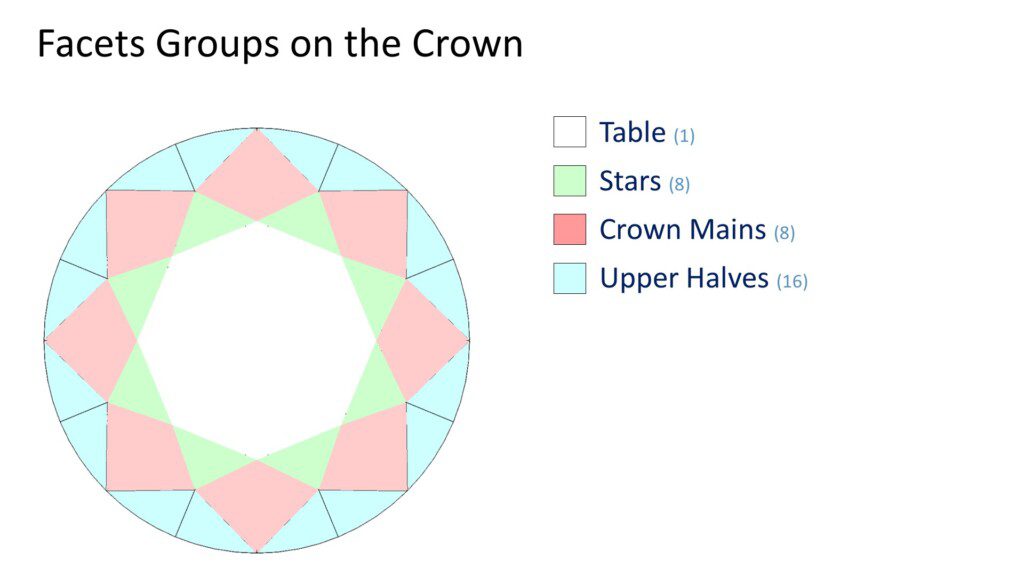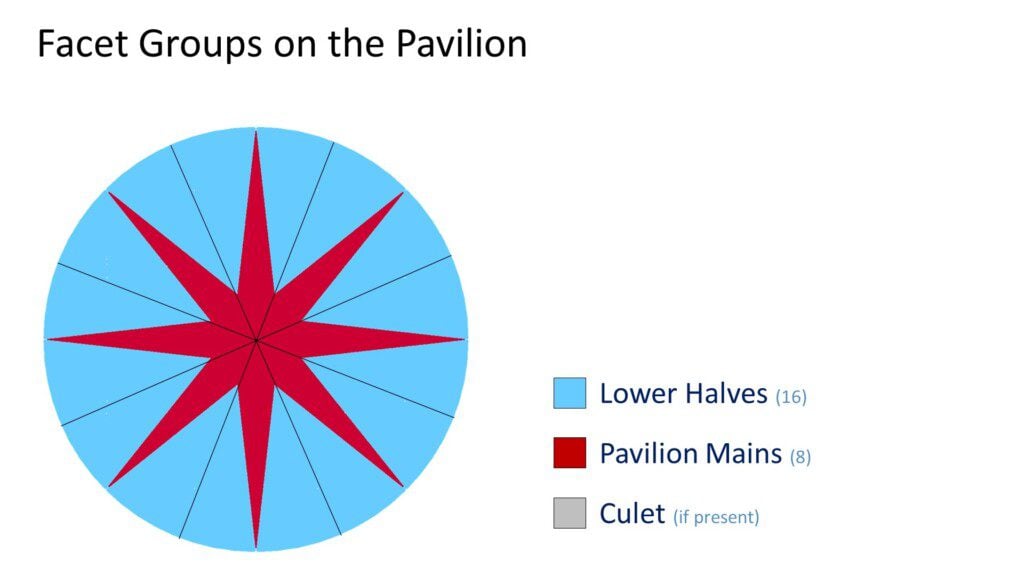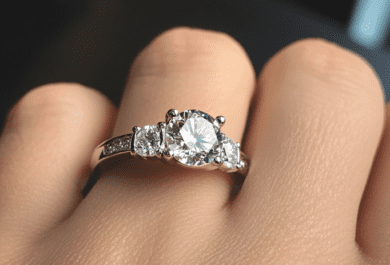Round Diamond Facets
There are eight facet groups on a modern round brilliant diamond. Each group has a different role to play in determining how bright and lively the diamond will be.
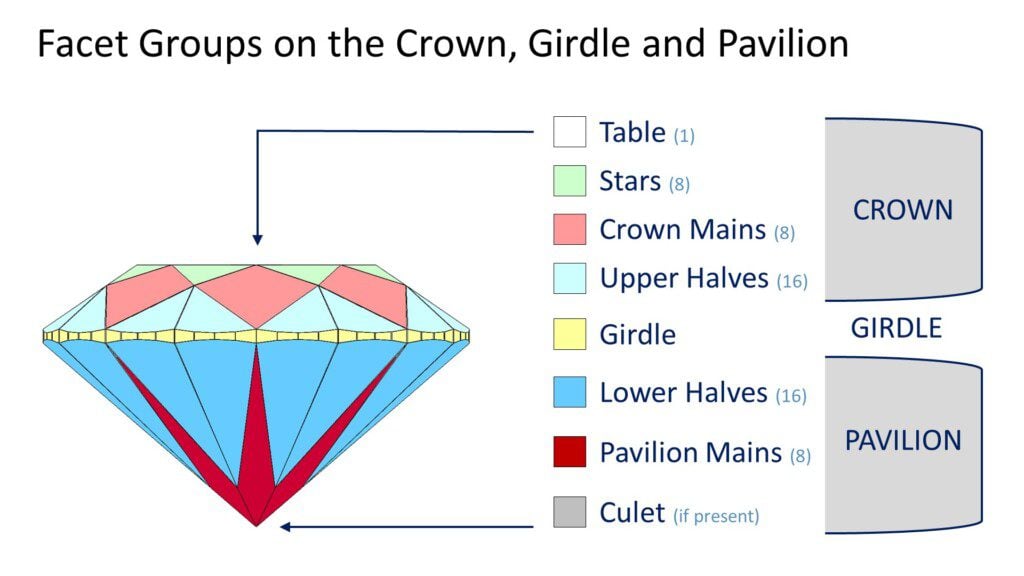
Table: This is a single facet, the largest on the round cut diamond. Octagonal in shape, it sits at the top of the crown.
Stars: The star facets are eight triangular facets extending from the table to the upper half (upper girdle) facets.
Crown Mains: Often referred to as “bezel facets,” the crown mains are eight kite shaped facets connect the table to the girdle. They are twins to the Pavilion Main facets beneath them.
Upper Halves: Also known as “upper girdle facets,” the 16 triangular upper half facets connect the girdle to the base of the star facets. They are twins to the Lower Half facets beneath them.
Girdle: The girdle separates the round diamond’s crown and pavilion. The girdle may be polished with tiny facets, semi-polished, or (rare in modern times) left rough.
Lower Halves: Also known as “lower girdle facets,” the 16 triangular lower half facets extend from the bottom of the girdle toward the culet. Their length determines how wide the pavilion main facets will be.
Pavilion Main Facets: These eight kite shaped facets extend from the girdle all the way to the culet. These facets are the primary drivers of light return, when properly paired with other key facet groups.
Culet (if present): A properly produced modern round diamond will not have a culet. The bottom of the diamond should come to a sharp point where the pavilion mains meet. If that does not happen a small “culet” facet will be polished at the bottom. If a culet facet is present the round cut diamond will have 58 facets, instead of the usual 57.
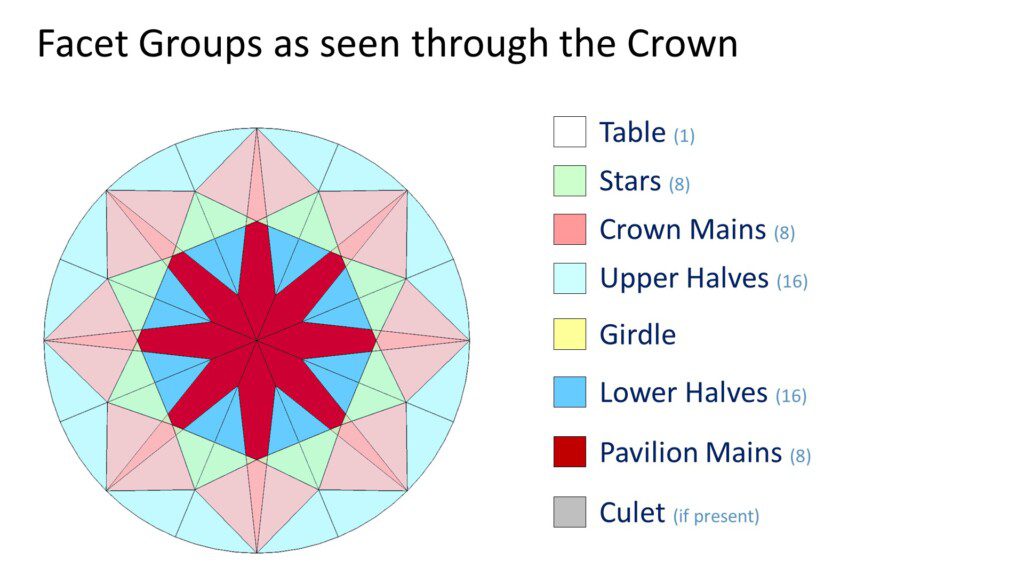
Intermediate Round Cut Diamond Details
Proportions and Light Behavior
The physics of light-behavior within a round cut diamond are reliably consistent, which means proportions can be used to draw certain conclusions about a round diamond’s cut-quality and likely appearance.
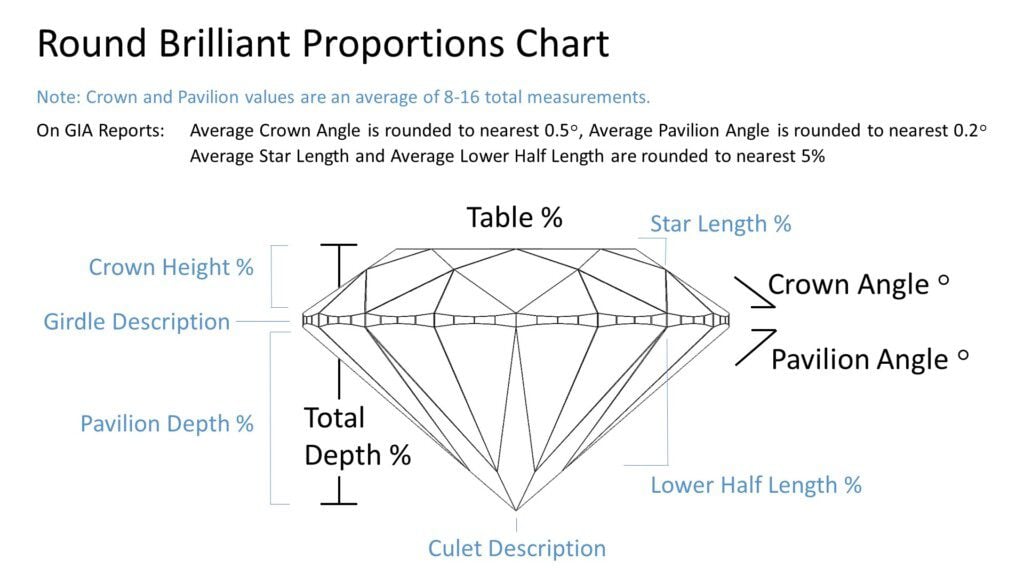
Primary round diamond proportions, in order of light-behavior importance.
- Table % (one measurement)
- Pavilion Angle (an average of 8 measurements)
- Crown Angle (an average of 8 measurements)
- The facet groups above, and how they interrelate, are most important, by far.
- Culet if present: “none” and “pointed” indicate no culet, thus a non-factor.
- Lower Half Length (an average of 16 measurements)
- Upper Half Length (an average of 16 measurements which does not appear on grading reports)
- Star Length (an average of 8 measurements)
- Girdle thickness (one measurement reflecting average around the compass of the diamond)
- Total Depth %, Pavilion Depth % and Crown Height % are by-products of values given above.
Note: Most data points on a grading report are averages of eight or sixteen measurements. For a round cut diamond this means a pavilion angle of 40.8 could be the average of eight very precisely cut pavilion-facets ranging from (example) a minimum of 40.6 to a maximum of 41.0. Or those eight facets could have a much wider variance from (example) min 40.3 to max 41.3 (or wider), creating potential performance deficits.
On GIA Reports: The numbers are not accurate to the tenth of a degree, like they are on AGS reports. For a round diamond the pavilion angle will be rounded to the nearest 0.2 degrees. The crown angle, star and lower halves are rounded to nearest 0.5 degree or 5%. This can interfere with those wanting extremely detailed round diamond analysis.
Summary: Proportions measurements are useful for a round cut diamond when using broad predictive analysis tools such as the Holloway Cut Advisor. But the nature of averaged and potentially rounded values – standing for 8-16 separate measurements apiece – cannot be used to predict the diamond’s cut consistency, 3D optical precision or performance flavor nuance, for those seeking such analysis.


